TEXAS PRODUCE: Many Things to Many People
December 2, 2018 | 9 min to read
In the Lone Star State, Texas serves as a vital hub for seasonal produce like melons and citrus, with significant imports from Mexico. Growers like J & D Produce export the majority of their harvests, while ensuring local options dominate markets. Despite weather-related challenges affecting yields, Texan pride fuels demand for local produce through initiatives like the Go Texan program. As both Texas and Mexico expand fruit and vegetable production, relationships between growers enhance market accessibility.
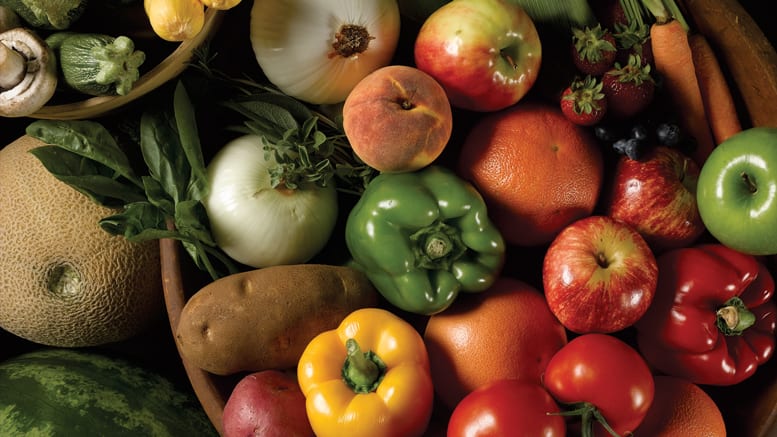
Originally printed in the December 2018 issue of Produce Business.
Lone Star State wears many hats, from global hub to farm stand down the road.
During this time of the year in the Lone Star State, Texas growers harvest and ship melons, citrus and other crops to supermarkets throughout the Eastern half of the country.
During an even colder season, Texas is the major conduit for fruits and vegetables from Mexico.
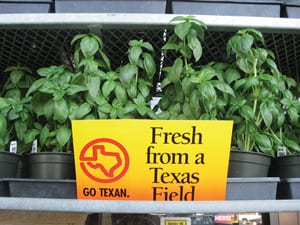 But even in this global hub, many residents prefer to Go Texan with fruits and vegetables grown just down the road.
But even in this global hub, many residents prefer to Go Texan with fruits and vegetables grown just down the road.
These markets, while different, are not always contradictory. Shippers commonly serve them with produce from diverse areas within and just south of the state.
“Quite a few of the growers in Texas also have relationships with the growers in Mexico,” says Dante Galeazzi, president of the Texas International Produce Association, Mission, TX. “It creates a one-stop shop for buyers to purchase produce in McAllen. They can get produce from Mexico, from Texas, local produce and tropical produce.”
The Texas International Produce Association, founded more than 75 years ago to help grow the state’s produce industry, took on the added mission in 2012 of facilitating the importation and marketing of fruits and vegetables grown outside of the country and brought into the U.S. through Texas ports of entry.
Although there can be market conflicts between Texas- and Mexico-grown crops, relationships developed over decades of free trade have largely diminished the importance of the border.
“In 2016, two-thirds of all the fresh produce sold in Texas was grown in Mexico,” says Galeazzi. “We also deal with people who grow in Texas. Texas grows $900 million of 60 different produce items on 117,000 acres. There are 26,000 acres of watermelons, and 22,000 acres of grapefruit out of a total of 29,000 acres of citrus.”
TEXAS TIME OF YEAR
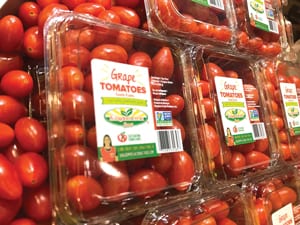 J & D Produce, a grower-shipper in the Rio Grande Valley and named for Jimmy and Diane Bassetti, has been supplying customers in the northeastern U.S. with kale in the winter months for more than a quarter century.
J & D Produce, a grower-shipper in the Rio Grande Valley and named for Jimmy and Diane Bassetti, has been supplying customers in the northeastern U.S. with kale in the winter months for more than a quarter century.
“Probably 20 percent of what we grow stays in the state, and the other 80 percent goes out of the state,” says Jeff Brechler, sales and production representative at J & D Produce, Edinburg, TX. “We ship to a mix of wholesale terminal markets and retail distribution centers and stay pretty much east of the Mississippi.”
Texas plays such a pivotal role in the produce supply system that heavy rains early this fall could impact the national availability and schedule of greens, citrus and onions.
“I was speaking with one of our South Texas growers, and he said it best: ‘It’s going to be an interesting start to our Texas season,’ ” says Galeazzi. “Weather has been a big factor for us in Texas. Most of our Rio Grande Valley and central Winter Garden/Uvalde growing regions have received a lot of rain over the last month, and it’s impacted a lot of our plantings. Our Texas fall crops are definitely experiencing delays and some challenging harvesting conditions. When the fields are wet, it’s really hard to move equipment or personnel through the fields. Thankfully conditions are improving; we had a handful of good days in a row and that allowed the growers to get back into the fields and back to business. Hopefully, we’ll continue to see these types of conditions moving forward.”
Texas is so important in grapefruit and orange production that when California’s largest grower-shipper wanted to fill out their portfolio of year-round citrus, they looked to the Lone Star State.
“We grow grapefruit and oranges in Texas,” says Kevin Roberts, Wonderful Citrus director of sales for Texas in Mission, TX. “The past five years have been somewhat flat in terms of volume, but with new plantings we started a few years ago, we see both grapefruit and oranges moving upward, and we expect to see this growth continue for the next several years, year-over- year.”
The Los Angeles headquartered Wonderful Company augmented its citrus position by also becoming the largest grapefruit grower in Texas.
“Wonderful will be the No. 1 supplier of red grapefruit, with about 50 to 55 percent total share of volume this winter season,” says Roberts. “Grapefruit and oranges are both growing in volume.”
Although Florida remains the orange juice king despite struggles with citrus greening disease, California and Texas are by far the leading fresh market citrus producers with a combined total of nearly 300,000 acres, according to the US Department of Agriculture’s Citrus Fruits 2018 Summary.
“We market the fact we grow oranges and grapefruits through our Texas Grown label, which showcases Texas as the primary messaging on the label,” says Roberts. “We have display bins for both labels that provide excellent options for merchandising Texas citrus in stores.”
The weather should make for good-sized citrus this year, but it may come a few days later than usual.
“For Texas citrus, the rain at this point in the season will help give the fruit size and ensure great eating quality,” says Galeazzi. “Unfortunately, it has slowed the kickoff of the season. Right now, we should be rocking and rolling with Texas grapefruit, but we haven’t quite gotten to that point.”
Because the produce supply chain is national, even global, the ability of New Yorkers to find an abundant supply of leafy green vegetables in the middle of winter may depend on the weather in the Rio Grande Valley.
“The 2018-2019 vegetable season will conclude in the middle of April, and this season supply will be trying at least through the holidays,” says Brechler.
“Right at the time of planting, we had more and heavier rains than we usually do. The entire valley, including the Winter Garden area west of San Antonio, has been getting heavier rains. It made for difficulty with planting schedules, which will lead to difficulty with availability later.”
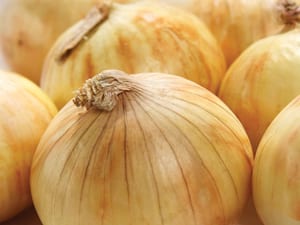 Other shippers also ran into delays planting their greens that could lead to winter supply gaps.
Other shippers also ran into delays planting their greens that could lead to winter supply gaps.
“The Texas greens are off to a much slower start,” says Galeazzi. “Quality has been good on product that has come out of the fields so far, but because of the slow start and weather, some of the areas are reporting lower yields, and we may continue to see low yields throughout November on some varieties, and perhaps much longer on others. We also foresee Texas cabbage being in high demand for November through January, because of the hurricane damages in Florida and Georgia.”
The wet weather may also diminish the supply of onions from Texas, but it is too early to know for certain.
“With regards to Texas onions, the rain came right in the middle of plantings,” says Galeazzi. “We had some onions get in the ground ahead of the storms, but everyone is out there right now trying to catch up on plantings. We expect this will cause some of our growers to plant a little less acreage on onions this season, although it’s tough to judge the overall impact until we wrap up with plantings.”
GLOBAL PRODUCE
Because most consumers want both fruits and vegetables from the farm just down the street and availability of everything from kale to tomatoes when it is snowing outside, many Texas shippers are both helped and hurt by the combination of global and local markets.
“The market gets complicated in the summer because some of the competition is a half-hour from the store,” says Jaime Garcia, general manager at Kingdom Fresh, Donna, TX. “But when the hurricanes come through quality becomes No. 2, because availability is No. 1.”
Kingdom Fresh ships Roma, grape and vine ripe tomatoes from 500 acres of greenhouses built over the past 15 years southeast of Mexico City in Puebla and a few hundred miles north in Torreon.
“People are looking for a sweet snacking tomato, whether you call it cherry, grape, Campari or cocktail,” says Garcia. “We also see more demand for Roma tomatoes because all the retailers want them to attract customers with a good deal.”
Texas growers find themselves in competition with the counterparts in Mexico during the weeks when many seasonal crops overlap.
“At certain times of the year, the Mexican imports impact us,” says Brechler. “It may affect us with parsley and cilantro. It can affect us with watermelons and honeydews, and onions.”
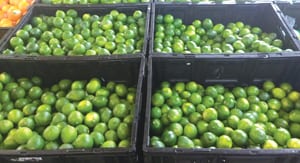 In 2016, U.S. fruit and vegetable imports from Mexico reached about 10 million metric tons, with a total value of about $12.4 billion, according to US Department of Agriculture Economic Research Service statistics, which accounted for 43 percent of all U.S. fruit-and-vegetable imports from all countries.
In 2016, U.S. fruit and vegetable imports from Mexico reached about 10 million metric tons, with a total value of about $12.4 billion, according to US Department of Agriculture Economic Research Service statistics, which accounted for 43 percent of all U.S. fruit-and-vegetable imports from all countries.
“Half of all the fresh produce that comes into the country from Mexico comes through Texas,” says Galeazzi.” Every year, 255,000 truckloads come into Texas from Mexico. At the Pharr International Bridge south of McAllen alone, 157,000 loads of produce come in every year, which is a little more than Nogales, AZ.”
Tomatoes account for nearly 30 percent of all the vegetables imported from Mexico, while avocados, watermelons and limes make up more than half the volume of fruits, according to USDA statistics.
“For the past 12 years, fresh produce from Mexico has grown significantly every year,” says Galeazzi. “The biggest items now are tomatoes, avocados, limes, mangos and broccoli. Mangos and limes flip-flop some years, and No. 5 changes. It was sweet peppers a few years ago.”
There are grower-shipper operations with farms on both sides of the border, as well as Texas-based shipping operations that grow in Mexico and sell to U.S. retailers.
While expanding its line to suit U.S. consumers, Kingdom Fresh remains committed to growing in Mexico because the tomatoes are better.
“The quality of the tomatoes from Mexico is better because of the technology and infrastructure,” says Garcia. “In the U.S., you have a lot of field-grown tomatoes, but in Mexico the growers put them under protection and the quality is usually higher.”
In the past couple of years, Kingdom Fresh has branched out to offer organic options for its most popular tomatoes.
“We grow Roma, grape, vine-ripe, organic Roma, and organic grape tomatoes,” says Garcia. “We are going into our second season with organic. We are pushing it in Texas, and we have had a lot of success marketing them.”
Every day more consumers have questions about the conditions of the workers who produce their food, and this company has answers.
“The human connections are what make our business successful,” according to the Kingdom Fresh internet site. “No labor camps, no relocated workers, no separation of families. What we get is long-term employees that get additional access to training, healthcare, education and support for local programs that grow their communities and support their families. By cultivating the human connections — we cultivate consistently great-tasting products.”
Although Mexico has become the most important source of produce sold in Texas, fruit and vegetable production is still increasing on both sides of the border.
“We expect the produce figures to keep growing,” says Galeazzi, “in both Texas and Mexico.”
REMAINING LOYAL THROUGH LOCAL
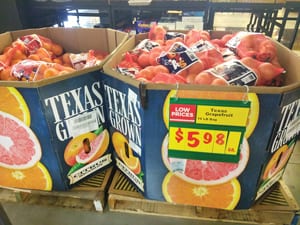 Texas growers and shippers also find willing customers among Lone Star state residents eager to support their local farmers by purchasing fruits and vegetables grown just down the road.
Texas growers and shippers also find willing customers among Lone Star state residents eager to support their local farmers by purchasing fruits and vegetables grown just down the road.
“Our main commodities are zucchini, yellow squash and purple top turnips,” says Bernie Thiel, who has grown vegetables and fruits outside Lubbock, TX, under the Sunburst Farms name for nearly half a century. “During the summer months, we mostly stay in Texas. With Dallas, Fort Worth, Houston and San Antonio there are plenty of customers. We have H-E-B, Safeway, Albertson’s, Berkshire Brothers. They promote it as from Texas. We have a sign in the store that says Locally Grown.”
Texas’ population hit the 28 million mark in 2018, according to U.S. Census estimates, and has the third highest growth population rate of all the states at 1.8 percent per year.
The San Antonio-based H-E-B supermarket chain paralleled that growth to reach 350 stores throughout the state.
Although most of Thiel’s ground is in squash grown under the Sunburst Farms name and shipped throughout the state, he has had success restoring the more personal connections of bygone days devoting modest acreage to produce sold directly to the public at his farm stand.
“The stand’s doing great; I think we pick up some customers every year,” says Thiel. “It’s probably 10 to 15 percent of our harvest The bulk of the customers are repeaters; some of them come two or three times a week, or even more. A bunch of it is repeat customers, but we get new ones every year.”
Although J & D Produce, Edinburg, TX, supplies retailers the length of the Eastern Seaboard with peppers, melons, dry onions, tropicals and a full range of leafy greens grown in the rich Rio Grande soil under the winter sun, the company also benefits from the recent interest in local produce.
“The Texas share of our sales has probably increased 5 percent the past three to five years,” says Jeff Brechler, sales and production representative at J & D. “There seems to be more support for local produce, and we have the Go Texan label on most items.”
The Texas Department of Agriculture Go Texan program provides a logo, shaped like the state, social and broadcast media, promotional signage, and in-store demos of a broad range of products grown, served on a plate, or sewn (yes, they do quilts), to promote sales throughout the state and around the world.
Even shippers whose main role is supplying fruits and vegetables grown in Mexico to the Eastern half of the US during the stormier time of year benefit from Texan pride in local produce.
“We’re really strong in our relations with retailers in Texas, and probably 40 percent of our tomatoes stay in the state,” says Jaime Garcia, general manager at Kingdom Fresh. “We grow in Mexico and come through Donna, TX, which is five miles away from McAllen. We sell 75 to 90 percent in the U.S.”
3 of 19 article in Produce Business December 2018

